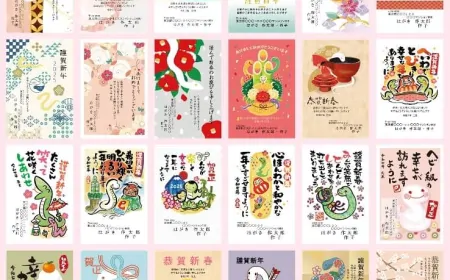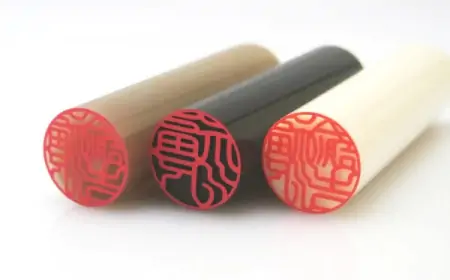Discover the tea ceremony - the quintessence of Japanese culture
The tea ceremony culture is more and more perfected and popularized, becoming a characteristic culture of the Japanese people.

Origin of the tea ceremony
Ancient documents record that Japanese tea originated in China. In the 8th century (the period from the Nara period to the Heian period), tea was introduced to Japan, which is said to have been brought back from China by ambassadors and international students. Tea drinking was not common at that time and was known as one of the lavish rituals only available to the nobility.
In the 12th century (Kamakura period), the Japanese monk Eisai (1141-1215) went to China to study Buddhism and brought some tea seeds to plant in the temple yard, but he thought it was medicine. This is also the reason for the birth of the book "Kissa Yojoki" (Kissa Yojoki) written by him, recording the benefits of tea. The book was then widely circulated and from then on, enjoying tea gradually became popular with Zen masters in Japan.
In the 13th century, the tea ceremony became a symbol of the power of the elite, and tea ceremonies were regulated by the ruling class - the samurai class. After that, the tea ceremony also gradually became popular among the common people but only for men. It was not until the beginning of the Meiji period (1868-1912) that women were officially allowed to attend the tea party. Since then, the tea ceremony culture has been perfected and popularized, becoming a characteristic culture of the Japanese people.
Introduction to a complete tea ceremony
Step 1: Preparation from the organizer
Before the tea ceremony begins, all the necessary tools must be carefully prepared. The set of equipment needed for the tea ceremony is called a chabako (茶箱), consisting of a cup, a wooden tea stirrer, a tea spoon and a few other items. In particular, during this preparation process, the tea party organizer must really achieve serenity, no longer entangled in the soul.
Step 2: Preparation from guests
Not only the host, but also the guests must prepare when invited to a tea party. Attendees should let their souls relax and get rid of daily worries.
Before entering the tea room or venue, attendees must wash their hands. This is not merely to ensure hygiene but also has the meaning as an act of washing away all dirt and mundane so that the soul is pure and ready to participate in the tea ceremony. When the tea ceremony is ready, the host will signal and invite guests into the tea room. Attendees must bow as a sign of respect for the organizer and gratitude for the preparations he or she has made.
Step 3: Warm up the tea maker
To ensure hygiene and keep tea warm, tea utensils must be rinsed with boiling water and then dried with a clean soft cotton towel before use. In particular, when performing this operation, the homeowner must do it with a dignified attitude, highly focused, and at the same time, the wiping and washing movements must also be flexible and graceful.
Step 4: Make tea
Amount of powder used to make tea:
Traditional matcha green tea is divided into two main categories, namely bitter tea (濃茶) and green tea (薄茶). To make a cup of bitter, fragrant and bold tea, the tea maker must give about 3.75g of matcha powder (corresponding to two measuring spoons of tea), and for bar tea, we only use about 1.8g (equivalent to about 2 ounces). corresponds to a measuring spoon of tea).
Boiling water temperature used to make tea:
-In winter: about 75°C to 85°C. Tea water is usually poured into the cup twice, first to the back of the cup and then to the second time to add water to the back of the cup.
– In summer: about 70°C to 80°C. The tea water is poured directly into the cup once only.
Mixing:
Put an appropriate amount of tea in the cup, pour hot water and dissolve it with a tea stirrer (chasen). First, stir vigorously and evenly at the bottom of the tea cup so that the tea powder is completely dissolved. When foam emerges, gently stir at the surface of the cup to create a smooth foam, and then place the tea cup on the tatami in front of the guest, the front of the cup facing the guest.
Step 5: Enjoy tea
After being offered tea by the host, the first guest will place the tea cup in the palm of his left hand and hold the cup with his right hand, then bow his head, slightly raise the tea cup and enjoy. Usually, the face of the cup (正面) often has a very important meaning, so when drinking, it is necessary to rotate the cup to avoid touching the surface of the cup with your lips. Do not drink the entire cup of tea in one go, but divide it into three sips. Bow and express gratitude after receiving and finishing his cup of tea. When returning the tea cup, the front of the cup should be turned towards the person offering the tea to show respect. Tea guests will also be invited to taste traditional Japanese sweets.
During the tea ceremony, the tea host and guests will often exchange about issues related to art and culture with high educational value. The dignified and reverent atmosphere is always the top criteria in the exchange. Usually, the person sitting on the front is the most important, wise and knowledgeable and will represent the group of people enjoying the tea.
Step 6: Complete the ceremony
After all guests have enjoyed tea, the host will also wash and wipe the utensils used during the ceremony. Guests should inspect these items after they have been cleaned as a way to show respect and admiration for the host. Then, the host will stow these tools and see off the guests.
The rules of enjoying tea and the sacred values of the tea ceremony
Drinking tea is a useful means to help the soul relax and practice meticulousness and care. There are 4 basic rules of tea enjoyment set forth by the great Japanese monk Sen no Rikyu - who has a profound influence on Japanese tea culture, which are: Harmony (harmony) - Respect (respect) – Thanh (serene) – Tich (quiet).
The tea ceremony not only helps to relax the mind but also has a very high educational meaning. From the tea ceremony to the steps of making tea, all follow the basic rules, the tea ceremony with sacred values is not only incorporated into a culture but is even considered by the Japanese as a religion and culture. Art of living is taken as the standard in daily living.
-------------------
Injavi.com - Visit Japan | Visit in Japan
Guide to living, studying and working in Japan
Related Products







![【ふるさと納税】[PROEVO] アルミスーツケース フレームキャ...](https://thumbnail.image.rakuten.co.jp/@0_mall/f405221-oki/cabinet/07205886/ay_sku/ay-s0027_00.jpg?_ex=128x128)
































































































